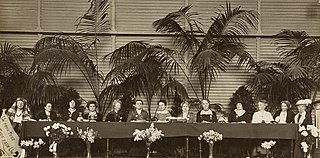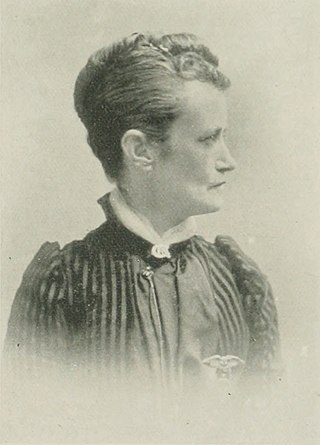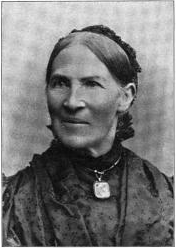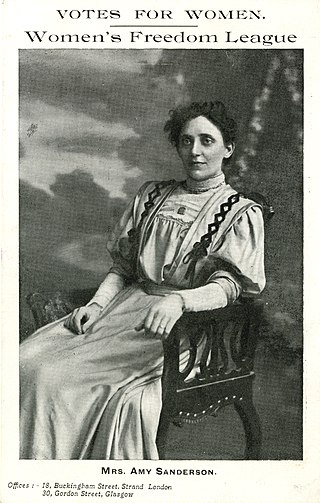Related Research Articles
All-Russian Union for Women's Equality was a liberal feminist organisation formed in the Russian Empire during the Russian Revolution of 1905. The Union demanded equal political, particularly voting, rights to women. The Union had main centers in Moscow and Saint Petersburg and a number of local chapters in various cities of the Empire. At its peak in 1906, the Union had 8,000 members and 78 branches in 65 cities. The Union published monthly magazine Women's Union in 1907–09. The Union disintegrated soon after the end of the revolution. Despite lack of tangible feminist achievements, the Union succeeded in raising awareness and political consciousness of many women in the Russian Empire.

The International Alliance of Women is an international non-governmental organization that works to promote women's rights and gender equality. It was historically the main international organization that campaigned for women's suffrage. IAW stands for an inclusive, intersectional and progressive liberal feminism on the basis of human rights and liberal democracy, and has a liberal internationalist outlook. IAW's principles state that all genders are "born equally free [and are] equally entitled to the free exercise of their individual rights and liberty," that "women's rights are human rights" and that "human rights are universal, indivisible and interrelated." In 1904 the Alliance adopted gold as its color, the color associated with the women's suffrage movement in the United States since 1867 and the oldest symbol of women's rights; through the Alliance's influence gold and white became the principal colors of the mainstream international women's suffrage movement.

The International Congress of Women was created so that groups of existing women's suffrage movements could come together with other women's groups around the world. It served as a way for women organizations across the nation to establish formal means of communication and to provide more opportunities for women to ask the big questions relating to feminism at the time. The congress has been utilized by a number of feminist and pacifist events since 1878. A few groups that participated in the early conferences were The International Council of Women, The International Alliance of Women and The Women's International League for Peace and Freedom.

The International Socialist Congress, Stuttgart 1907 was the Seventh Congress of the Second International. The gathering was held in Stuttgart, Germany from 18 to 24 August 1907 and was attended by nearly 900 delegates from around the globe. The work of the congress dealt largely with matters of militarism, colonialism, and women's suffrage and marked an attempt to centrally coordinate the policies of the various socialist parties of the world on these issues.

Jessie Chrystal Macmillan was a suffragist, peace activist, barrister, feminist and the first female science graduate from the University of Edinburgh as well as that institution's first female honours graduate in mathematics. She was an activist for women's right to vote, and for other women's causes. She was the second woman to plead a case before the House of Lords, and was one of the founders of the Women's International League for Peace and Freedom.

Jeni Bojilova-Pateva, also transliterated as Zheni Bozhilova-Pateva, was a Bulgarian teacher, writer, women's rights activist, and suffragist, who became involved in the pacifist movement. After graduating with teaching credentials in 1893, she began her profession, but was barred from teaching when a law was passed in 1898 that limited the rights of married women. She turned to activism and journalism, becoming involved in the international women's movement that year. A highly prominent feminist, she was one of the founders of the Bulgarian Women's Union in 1901. During 1905 in Burgas, she founded "Self-Awareness", a feminist group, and served as its chair for 25 years. As editor of the Women's Voice she published articles on developments in the women's movement in Bulgaria and abroad, as well as about issues affecting women. Throughout her career, she published over 500 articles and books.

Clara Dorothy Bewick Colby was a British-American lecturer, newspaper publisher and correspondent, women's rights activist, and suffragist leader. Born in England, she immigrated to the US, where she attended university and married the former American Civil War general, later Assistant United States Attorney General, Leonard Wright Colby. In 1883, she founded The Woman's Tribune in Beatrice, Nebraska, moving it three years later to Washington, D.C.; it became the country's leading women's suffrage publication. She was an advocate of peace and took part in the great peace conference at San Francisco during the exposition. She also spoke on behalf of the soldiers of the Spanish War. During the Spanish–American War (1898), she was officially appointed as war correspondent, the first woman to be so recognized.

Women at the Hague was an International Congress of Women conference held at The Hague, Netherlands in April 1915. It had over 1,100 delegates and it established an International Committee of Women for Permanent Peace (ICWPP) with Jane Addams as president. It led to the creation of the Women's International League for Peace and Freedom (WILPF).
First Conference of the International Woman Suffrage Alliance was held in 1902 in Washington D.C. to consider the feasibility of organizing an International Woman Suffrage Association.

Second Conference of the International Woman Suffrage Alliance was held in Berlin, Germany in June 1904. The main features of the second conference were the formation of "The International Woman Suffrage Alliance," and the adoption of the Declaration of Principles.
Third Conference of the International Woman Suffrage Alliance was held in Copenhagen, Denmark on August 7, 8, 9, 10, and 11, 1906. The Canadian National Association had been revived and had become a member. New national associations had been formed in Hungary and Italy and these had become members. The Congress voted upon the application of the new organization, called the Russian Union, which was unanimously accepted, and the Congress therefore had twelve affiliated associations in its membership. Fraternal delegates were present from friendly associations in Finland, Iceland and France, thus making fifteen countries represented. A committee was appointed at this Congress to attempt a union of Finnish societies for the purpose of affiliating with the Alliance. Later, the "Unionem" of Finland was admitted.

Sixth Conference of the International Woman Suffrage Alliance was held in June 1911 in Stockholm, Sweden. It was led by the organization's president, Carrie Chapman Catt.

The Seventh Conference of the International Woman Suffrage Alliance met in Budapest, Hungary, 15–21 June 1913. As had been the case with all the preceding International Woman Suffrage Alliance conferences, the location had been chosen to reflect the status of woman suffrage: a place where the prospects seemed favorable and liable to influence public sentiment by demonstrating that it was now a global movement. When it had been announced at the sixth congress that the next one would be held in the capital of Hungary, it was felt that the location seemed very remote, and there were concerns that Hungary did not have representative government. In fact, it proved to be one of the largest and most important conventions. Furthermore, the delegates stopped en route for mass meetings and public banquets in Berlin, Dresden, Prague and Vienna, spreading its influence ever further afield.
The Eighth Conference of the International Woman Suffrage Alliance occurred June 6–12, 1920, in Geneva, Switzerland.

Annie Le Porte Diggs was a Canadian-born American activist, journalist, author, and librarian. She was the chairman of the delegation from Washington, D.C. for the National People's Party Convention, in Omaha, in 1892. It was the first time a woman ever led a delegation at a national political convention. She was a speaker for the People's Party in nearly every state and territory. She served as state librarian of Kansas, 1898–1902. A writer, Diggs served as the associate editor of The Advocate, Topeka, Kansas, and was the author of Little Brown Brothers and the Story of Jerry Simpson. Diggs died in 1916 in Michigan.

Mary Gray Peck was an American journalist, educator, suffragist, and clubwoman. She was interested in economic and industrial problems of women, and investigated labor conditions in Europe and the United States. Born in New York, she studied at Elmira College, University of Minnesota, and University of Cambridge before becoming an Assistant Professor of English at the University of Minnesota. Later, she became associated with the General Federation of Women's Clubs, College Equal Suffrage League, National American Woman Suffrage Association, Women's Trade Union League, Woman Suffrage Party, and the Modern Language Association. Peck was a delegate at the Sixth Conference of the International Woman Suffrage Alliance in Stockholm, 1911.

Hedevig Rosing was a Danish-born Norwegian author, educator, school founder, and suffragist. She specialized in teaching the deaf-mute. She was the first woman to teach in Copenhagen's public schools.

Amy Sanderson née Reid (1876-1931), was a Scottish suffragette, national executive committee member of the Women's Freedom League, who was imprisoned twice. She was key speaker at the 1912 Hyde Park women's rally, after marching from Edinburgh to London, and, with Charlotte Despard and Teresa Billington-Greig, was a British delegate to the 1908 and 1923 international women's congresses.

Laura Gregg Cannon was an American lecturer and organizer in the women's suffrage movement. Over the course of almost three decades, she led or supported suffrage activities in fifteen different states. She was a Life Member of the National American Woman Suffrage Association (NAWSA). Cannon edited a suffrage publication and wrote on labor issues. She was a national speaker for the Socialist Party.

Octavia Williams Bates was an American suffragist, clubwoman, and author of the long nineteenth century. She was involved with women's movements associated with higher education and political enfranchisement. Bates was probably officially connected with more societies looking to these ends than any other woman of her time in Michigan, if not in the U.S. She traveled in various parts of the U.S. and Canada, and was specially interested in the woman suffrage movement. In 1899, after attending a conference in Baltimore, Maryland, Bates was so attracted to the city that she made it her permanent home.
References
 This article incorporates text from this source, which is in the public domain : International Alliance of Women for Suffrage and Equal Citizenship's "Report of Congress" (1908)
This article incorporates text from this source, which is in the public domain : International Alliance of Women for Suffrage and Equal Citizenship's "Report of Congress" (1908) This article incorporates text from this source, which is in the public domain : K. Schirmacher's "The Modern Woman's Rights Movement: A Historical Survey" (1912)
This article incorporates text from this source, which is in the public domain : K. Schirmacher's "The Modern Woman's Rights Movement: A Historical Survey" (1912)
- 1 2 3 Chonkova, Genoveva; Sabeva, Emilia (June 2009). The Contribution of Jeni Bojilova-Pateva to the International Activities of the Bulgarian Women's Movement (PDF). International Science conference "Economics and Society Development on the Base of Knowledge", 4-5 June 2009 (in Bulgarian). Stara Zagora, Bulgaria: Stara Zagora Union of Scientists. pp. 30–34. Archived from the original (PDF) on 4 March 2016. Retrieved 28 November 2011.
- 1 2 3 International Alliance of Women for Suffrage and Equal Citizenship 1908, p. 56.
- ↑ "Women's Suffrage Congress Amsterdam". The Evening Mail. 22 June 1908. p. 3.
- ↑ Schirmacher 1912, p. 58.